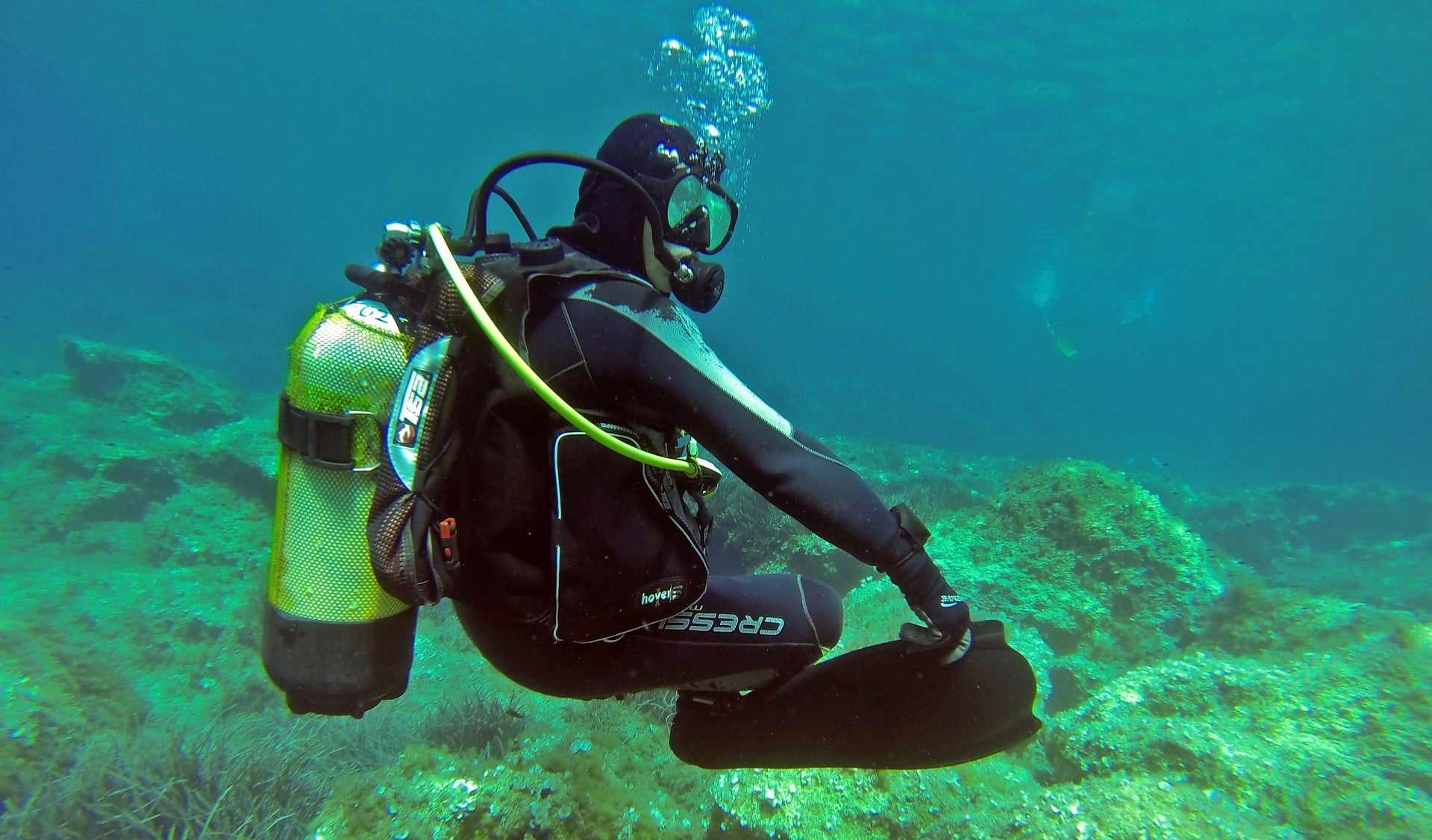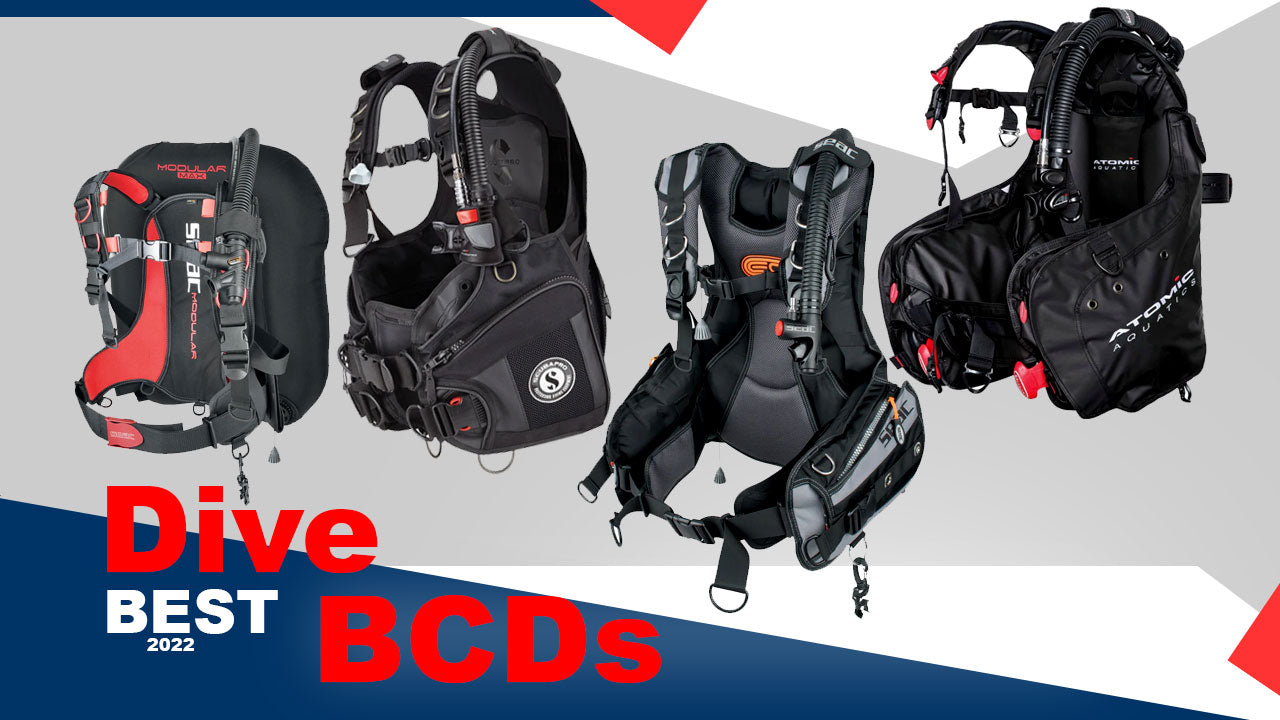Beginner Tips: Everything You Need to Know About Dive Weights

Aproper weight system is an important part of every diver’s gear setup. Choosing the right amount and type of dive weights can make or break a dive, however many beginner scuba divers struggle with the task. In particular, there are a few common issues divers face in regard to weights - not being able to calculate how much weight they need to wear on a dive; not knowing what type of weights to use and how to distribute them properly; failing to adjust the amount of weight they wear as conditions or gear change.
So, we have decided to address all three of these issues and provide you with a few tips that will help you pick out the right kind of weights and use them effectively.
To begin with, let’s look at the different factors that influence how much weight you need.
- Yourself: your physiology (weight) and your body mass index (weight/height).
- The water around you: in salt water you'll need more weight than in freshwater.
- Your equipment: weighing and buoyancy depend on the equipment you use, most notably, the thickness and style of your exposure suit and the type of your cylinder. All wetsuits are buoyant due to air trapped in the neoprene. The thicker a wetsuit, the more buoyancy it provides. As for the cylinders, the ones made of steel are less buoyant than the aluminum ones. You should also remember that all cylinders become more buoyant as they empty of air.
Next you need to learn to weigh yourself properly. A simple weighing test will help you get a general sense of your current weight needs. The test will need to be performed again if any of the variables we have mentioned above change.
Are You Properly Weighted?
You can find a step-by-step instruction on how to perform a weighing test in the following article.
Another thing you may want to think about is the type of weight system you’ll use. Dive weights come in many shapes and sizes, so it’s important to become familiar with the different varieties before you actually start purchasing them.
There are basically who weight system styles - weight belts and integrated weights.
A weight belt is the oldest weight system used for scuba. It is a very simple and affordable piece of dive gear that works just like a regular belt by fastening around your waist. You can easily adjust the amount of weight you have on by adding or removing weights as needed. On the downside, because all or most of the lead ends up around your midsection, weight distribution and balance are not ideal. Additionally, with the weight belt, there is a risk that it can be accidentally knocked off during a dive, potentially leading to an uncontrolled ascent.
You can choose from a few different styles of weight belts:
- Nylon lead block belts are the most common and affordable out there. You simply thread the lead weights on to them. Dive belts used by scuba divers are usually two to three inches long and come with a quick-release buckle.
- Rubber lead block belts work basically the same as the nylon ones. The only difference is that thanks to their high elastic properties, rubber belts will contract and compress with your wetsuit during the descent and expand and stretch on ascent, resulting in a snug fit and weights properly positioned on your hips throughout the dive with no need for additional adjustment.
- Pocket belts, as the name suggests, come with a number of pockets or pouches along their length. You can add lead blocks, or soft lead shot weights into these pockets. Many divers find this type of belts more comfortable, as they don’t dig into their sides as much.
Integrated weight systems are built right into the BCD. The obvious advantages of integrated weight systems are the improved distribution of weight and lower risk of inadvertent weight ditching. Using an integrated weight system also eliminates the uncomfortable press of lead on your hips and waist completely. Two weight pockets on either side of the BC allow you to divide your weight. Additionally, many BCDs have trim pockets to place small weights and fine-tune your balance in the water. So, if you choose a weight integrated BCD, you will only need to get the appropriate weight increments and amount.
Note, if you wear a dry suit, you may want both an integrated weight system and a weight belt. This redistributes your weight more evenly for maximum control and comfort. And if you are into freediving, get the elastic Marseillaise belt.
As for the weights themselves, there are a few different types as well:
- Standard lead weights - they are cheaper but rougher and therefore less finished and more fragile.
- Coated weights - standard weights coated in plastic. They're less abrasive on wetsuits, more environmentally-friendly and more durable.
- Shot weights - softer and provide a more flexible weight. Each lead shot pellet is individually coated to protect it from erosion. Without this coating the lead shot would erode in salt water and form a powdery lead chloride. This can be harmful to marine life so you do need to make sure you only use coated lead shot in your diving weights. Shot weights are also known as soft weights, because they mould around the diver's body much more easily than solid lead weights.
Weights also come in different increments. This allows you to reach a better level of buoyancy, by having the option of utilizing many different amounts, rather than just one or two. For example you may need a few three pound pouches and then two one pound weights. Whatever combination you need, you can most likely reach the successful weight, by mixing and matching the different sizes.
You can check out different kinds of diving weights and belts in our catalog.
Finally, once you know the essentials, such as how much weight you need to use and what kind of system you prefer, you may start fine tuning your setup. Here are a few tips to help you with that:
- Try to document your weight use. As previously stated, everyone is different. Some weights may work better for you than others. If you keep track of the weights you are using, and how they affect you underwater, you can work to find the perfect combination for your dive. After each dive, write down what exposure suit you wore, what equipment you used, how much lead you carried, how much your body weighs and whether you seemed too heavy or light at your safety stop. Keep logging this information until you get your weighting correct. Then, even if it's six months later and you've gained a few pounds, you should be able to estimate almost exactly how much lead you'll need.
- Learn to distribute the weight over your whole body. First, get neutral buoyancy. Then position your body horizontally, stretching your legs back. Make sure your legs don't float or sink. If you feel that your legs are too buoyant, consider wearing ankle weights. On the other hand, if your hips keep sinking, you are probably wearing excessive weight around your waist. If you feel like you are being pulled towards one side, try spacing your weights more evenly.
- Pay attention to the conditions you will be diving in. As always, it is important to know the dive conditions far ahead of the time of your dive. Some water conditions might require more weights. If you keep a log of this, you will be able to plan better for each dive.
- Make sure you know how to quickly drop your weights if needed. If you are wearing a weight belt, practice the quick-draw method of release. Slap your hands against your hips, then slide them up to the belt and forward until they reach the buckle. This ensures you’ll find the buckle even if it has shifted away from center. Now, simply release it. If you are wearing a weight integrated BCD, make sure you know where the release mechanisms are located and how to use them.
- Don't be afraid to ask for help. Many newly certified divers hesitate to experiment with the weights they used in their initial course. As a result, they often spend years overweighted and have issues with buoyancy control. So, if you are not sure how much weight you need or are using different equipment from what you have used before, let your divemaster know you’d like to do a weight check prior to the dive. In most cases, they’ll be happy to help you get in the water ahead of the dive, and give or take extra bricks as you dial in. When purchasing the weights, you can also ask a professional for their opinion of each weight, and what they think would be the most beneficial setup for you.
Configuring your dive weight needs can seem daunting, but it does not have to be. Trust your instincts, plan ahead, keep track of your dives, and don't be afraid to obtain help from professionals. By following these simple hints, you can easily figure out what works best for you.




![9 Best Dive Computers in 2024 [Reviewed & Updated] - DIPNDIVE](http://dipndive.com/cdn/shop/articles/best_computers2.jpg?v=1658752532)
